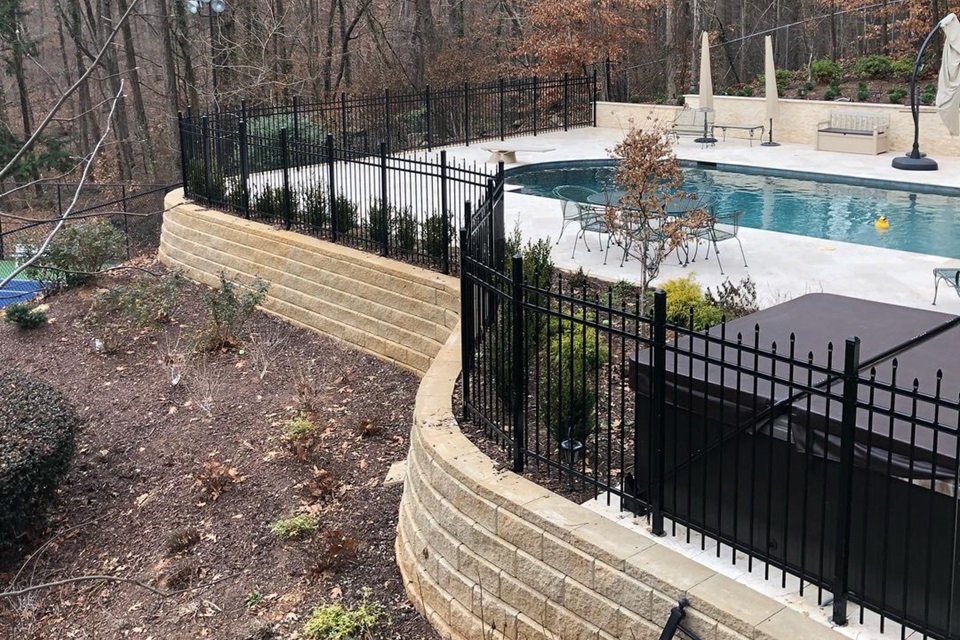Swimming pools are great for staying cool in hot weather. However, they can be dangerous for little kids and pets without sufficient safety precautions. To keep them safe, it’s essential to put up a strong fence around the pool. But do you have to have a fence around a pool? Yes, you absolutely do, since a fence acts like a protective wall. It stops kids and pets from getting into the pool area when they shouldn’t. When you have a sturdy and well-built fence, you can enjoy your pool without worrying about accidents. This article will tell you how these safety fences work, what they’re made of, how they’re built, and why it’s important to follow the rules and regulations about them.
Table of Contents
The Science Behind Pool Safety Fences
Height & Climbing Deterrence
The scientific foundation of an effective pool safety fence lies in its height, which directly correlates with its ability to deter unauthorized access. Studies in biomechanics have revealed that a fence should stand at least four feet tall to thwart children from scaling it. Higher fences offer even more significant security. This height threshold is derived from analyses of the physical capabilities of children, emphasizing the necessity of a formidable barrier.
Gate Mechanics
The gate of a pool safety fence is a critical component, demanding meticulous engineering. It should incorporate a self-closing and self-latching mechanism based on principles of mechanical design and spring-loaded kinetics. This feature ensures that the gate consistently returns to its closed position after individuals enter or exit the pool area. Moreover, the self-latching mechanism prevents the inadvertent gates from being left open, thereby reducing the risk of unauthorized access.
Mesh Vs. Solid Panels
The choice of materials for a pool safety fence is a crucial consideration informed by material science. Mesh fencing is a prevalent selection due to its transparency, facilitating an unobstructed view of the pool area. It offers superior airflow and visibility, primarily due to its porous nature. Conversely, solid panel fences may obstruct visibility but can provide increased privacy. The decision between mesh and solid materials should be made with an appreciation of these trade-offs.
Pool Safety Alarm Systems
These are important for keeping the pool area safe. They work by using special sensors in the water. These sensors can detect any movement in the pool when nobody should be swimming. Smart computer programs in the alarm system help it figure out if the movement is just regular things like splashing water or toys, or if it’s something dangerous like a child falling into the pool. When the alarm senses something risky, it makes a loud noise or sends a message to let adults know there might be a problem with the pool, so they can check and make sure everyone is safe.
Structural Integrity & Installation
The structural integrity of a pool safety fence depends on its secure installation, a process steeped in engineering principles. The fence must be anchored firmly to the ground. This prevents any gaps or spaces that could enable children or pets to bypass the barrier. Professional installation is highly recommended to ensure compliance with structural engineering standards and guidelines.
Regulatory Compliance
Many jurisdictions have established regulations and codes governing pool safety, necessitating compliance with prescribed technical specifications. These regulations encompass various facets, including fence height, gate mechanisms, and structural integrity. Pool owners must meticulously adhere to these directives to guarantee the effectiveness and legal conformity of their pool safety fences.
In conclusion, in answer to the question, “do you have to have a fence around a pool,”, yes you absolutely do. And the reason is that the installation of a proper pool safety fence is not merely an aesthetic enhancement but a technical necessity to thwart accidents and fatalities, especially concerning young children and pets.



